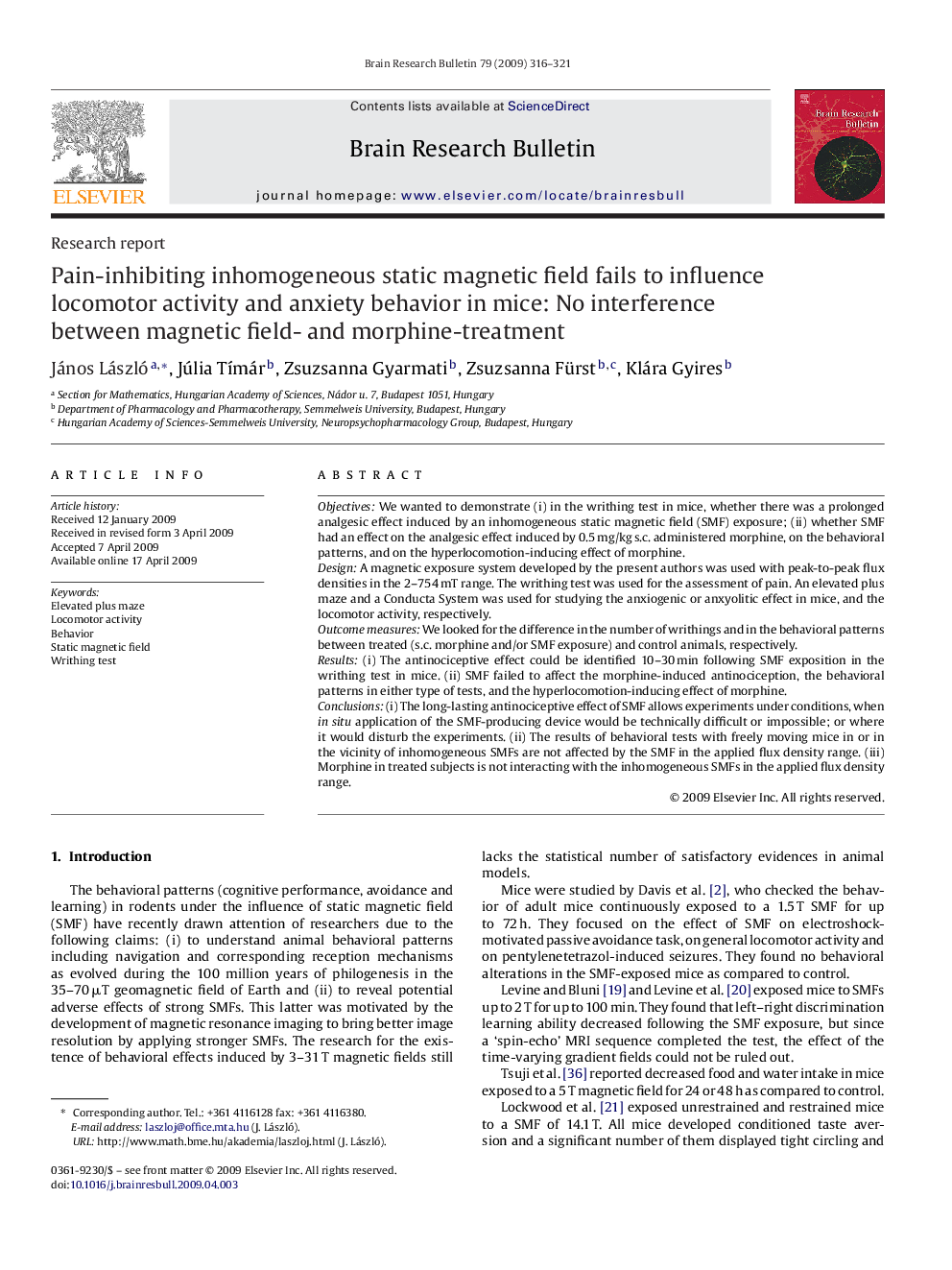| Article ID | Journal | Published Year | Pages | File Type |
|---|---|---|---|---|
| 4319626 | Brain Research Bulletin | 2009 | 6 Pages |
ObjectivesWe wanted to demonstrate (i) in the writhing test in mice, whether there was a prolonged analgesic effect induced by an inhomogeneous static magnetic field (SMF) exposure; (ii) whether SMF had an effect on the analgesic effect induced by 0.5 mg/kg s.c. administered morphine, on the behavioral patterns, and on the hyperlocomotion-inducing effect of morphine.DesignA magnetic exposure system developed by the present authors was used with peak-to-peak flux densities in the 2–754 mT range. The writhing test was used for the assessment of pain. An elevated plus maze and a Conducta System was used for studying the anxiogenic or anxyolitic effect in mice, and the locomotor activity, respectively.Outcome measuresWe looked for the difference in the number of writhings and in the behavioral patterns between treated (s.c. morphine and/or SMF exposure) and control animals, respectively.Results(i) The antinociceptive effect could be identified 10–30 min following SMF exposition in the writhing test in mice. (ii) SMF failed to affect the morphine-induced antinociception, the behavioral patterns in either type of tests, and the hyperlocomotion-inducing effect of morphine.Conclusions(i) The long-lasting antinociceptive effect of SMF allows experiments under conditions, when in situ application of the SMF-producing device would be technically difficult or impossible; or where it would disturb the experiments. (ii) The results of behavioral tests with freely moving mice in or in the vicinity of inhomogeneous SMFs are not affected by the SMF in the applied flux density range. (iii) Morphine in treated subjects is not interacting with the inhomogeneous SMFs in the applied flux density range.
